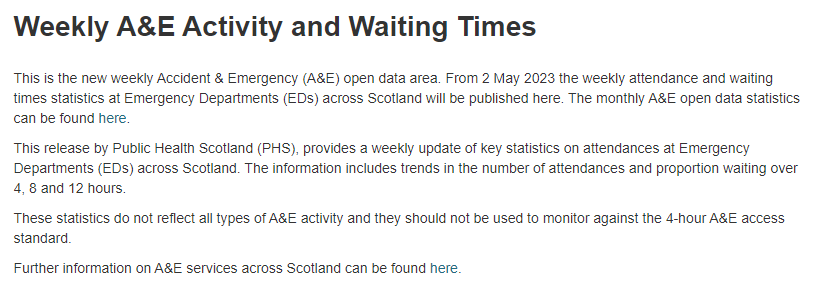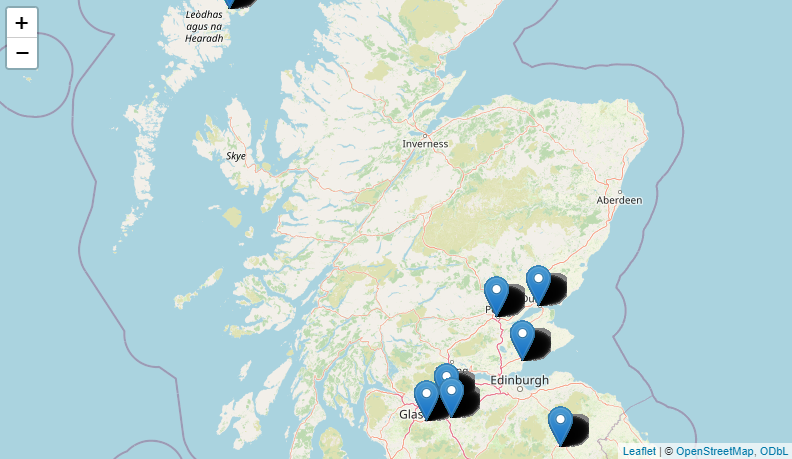No feedback found for this session
Scope of the possible with R
R
overview
Session materials
- all materials
- slides
html / pdf
Slides for this session / .pdf slides for this session
Welcome
- this session is a non-technical overview designed for service leads
Session outline
- Why R, and why this session?
- R demo - take some data, load, tidy, analyse
- Strengths and weaknesses
- obvious
- less obvious
- Alternatives
- Skill development
R
- free and open-source
- multi-platform
- large user base
- prominent in health, industry, biosciences
Why this session?
- R can be confusing
- it’s code-based, and most of us don’t have much code experience
- it’s used for some inherently complicated tasks
- it’s a big product with lots of add-ons and oddities
- But R is probably the best general-purpose toolbox we have for data work at present
- big user base in health and social care
- focus on health and care-like applications
- not that hard to learn
- extensible and flexible
- capable of enterprise-y, fancy uses
R demo
- this is about showing what’s possible, and give you a flavour of how R works
- we won’t explain code in detail during this session
- using live open data

Load that data
One small bit of cheating: renaming
Preview
| date | country | hb | loc | type | attend | n_within | n_4 | perc_4 | n_8 | perc_8 | n_12 | perc_12 |
|---|---|---|---|---|---|---|---|---|---|---|---|---|
| 20190317 | S92000003 | S08000031 | C418H | Emergency Department | 1285 | 1179 | 106 | 91.8 | 15 | 1.2 | 0 | 0.0 |
| 20151025 | S92000003 | S08000022 | H202H | Emergency Department | 624 | 606 | 18 | 97.1 | 0 | 0.0 | 0 | 0.0 |
| 20210919 | S92000003 | S08000031 | C313H | Emergency Department | 570 | 427 | 143 | 74.9 | 27 | 4.7 | 2 | 0.4 |
| 20221127 | S92000003 | S08000022 | C121H | Emergency Department | 149 | 147 | 2 | 98.7 | 0 | 0.0 | 0 | 0.0 |
| 20171119 | S92000003 | S08000028 | W107H | Emergency Department | 111 | 111 | 0 | 100.0 | 0 | 0.0 | 0 | 0.0 |
Removing data
ae_activity <- ae_activity |>
select(!c(country, contains("perc_")))| date | hb | loc | type | attend | n_within | n_4 | n_8 | n_12 |
|---|---|---|---|---|---|---|---|---|
| 20220612 | S08000029 | F704H | Emergency Department | 1394 | 974 | 420 | 86 | 15 |
| 20230716 | S08000025 | R103H | Emergency Department | 149 | 139 | 10 | 0 | 0 |
| 20200823 | S08000032 | L302H | Emergency Department | 1108 | 1011 | 97 | 5 | 1 |
| 20151004 | S08000020 | N411H | Emergency Department | 475 | 469 | 6 | 0 | 0 |
| 20160103 | S08000022 | H212H | Emergency Department | 149 | 137 | 12 | 1 | 0 |
Tidying data
ae_activity <- ae_activity |>
mutate(date = lubridate::ymd(date))| date | hb | loc | type | attend | n_within | n_4 | n_8 | n_12 |
|---|---|---|---|---|---|---|---|---|
| 2016-03-27 | S08000022 | H212H | Emergency Department | 150 | 148 | 2 | 0 | 0 |
| 2024-03-17 | S08000024 | S314H | Emergency Department | 2359 | 1027 | 1332 | 513 | 273 |
| 2017-04-16 | S08000031 | G107H | Emergency Department | 1767 | 1445 | 322 | 16 | 0 |
| 2015-09-13 | S08000032 | L308H | Emergency Department | 1291 | 1219 | 72 | 0 | 0 |
| 2021-01-31 | S08000019 | V217H | Emergency Department | 812 | 717 | 95 | 14 | 0 |
Subset data
- we’ll take a random selection of 5 health boards to keep things tidy
| date | hb | loc | type | attend | n_within | n_4 | n_8 | n_12 |
|---|---|---|---|---|---|---|---|---|
| 2016-11-06 | S08000016 | B120H | Emergency Department | 506 | 491 | 15 | 0 | 0 |
| 2016-05-22 | S08000019 | V217H | Emergency Department | 1299 | 1171 | 128 | 7 | 0 |
| 2018-12-02 | S08000017 | Y144H | Emergency Department | 203 | 182 | 21 | 4 | 1 |
| 2017-04-30 | S08000019 | V217H | Emergency Department | 1312 | 1029 | 283 | 7 | 0 |
| 2024-06-09 | S08000019 | V217H | Emergency Department | 1247 | 546 | 701 | 322 | 152 |
Basic plots
library(ggplot2)
ae_activity |>
ggplot() +
geom_line(aes(x = date, y = attend, colour = hb, group = loc)) 
Joining data
ae_activity |>
left_join(read_csv("data/boards_data.csv"), by = c("hb" = "HB")) |>
select(!any_of(c("_id", "HB", "HBDateEnacted", "HBDateArchived", "Country"))) |>
ggplot() +
geom_line(aes(x = date, y = attend, colour = HBName, group = loc))
and again…
Add to a map
ae_activity_loc |>
leaflet::leaflet() |>
leaflet::addTiles() |>
leaflet::addMarkers(~longitude, ~latitude, label = ~HospitalName)
Then make that map more useful
ae_activity_loc |>
group_by(HospitalName) |>
summarise(attend = sum(attend), n_within = sum(n_within), longitude = min(longitude), latitude = min(latitude)) |>
mutate(rate = paste(HospitalName, "averages", scales::percent(round(n_within / attend, 1)))) |>
leaflet::leaflet() |>
leaflet::addTiles() |>
leaflet::addMarkers(~longitude, ~latitude, label = ~rate)
Then add to reports, dashboards…
Strengths
- enormous scope and flexibility
- a force-multiplier for fancier data work
- helps collaboration within teams, between teams, between orgs
- reproducible analytics
- modular approaches to large projects
- decreasing pain curve: the fancier the project, the better
Weaknesses
- harder to learn than competitors
- very patchy expertise across H+SC Scotland
- complex IG landscape
- messy skills development journey